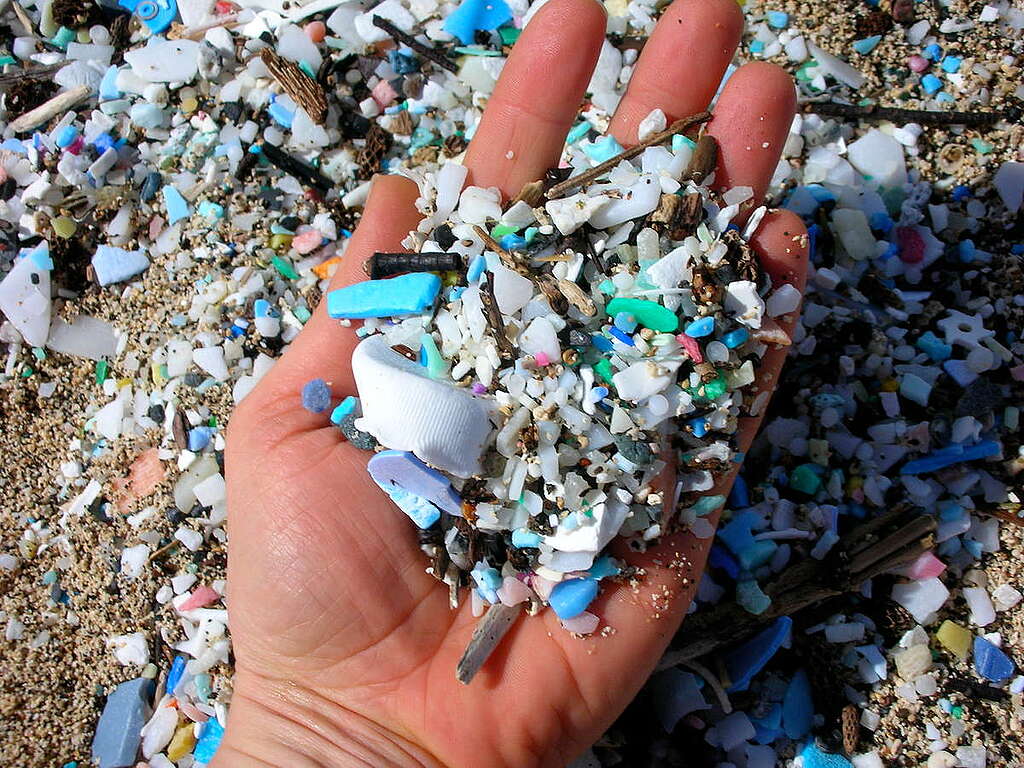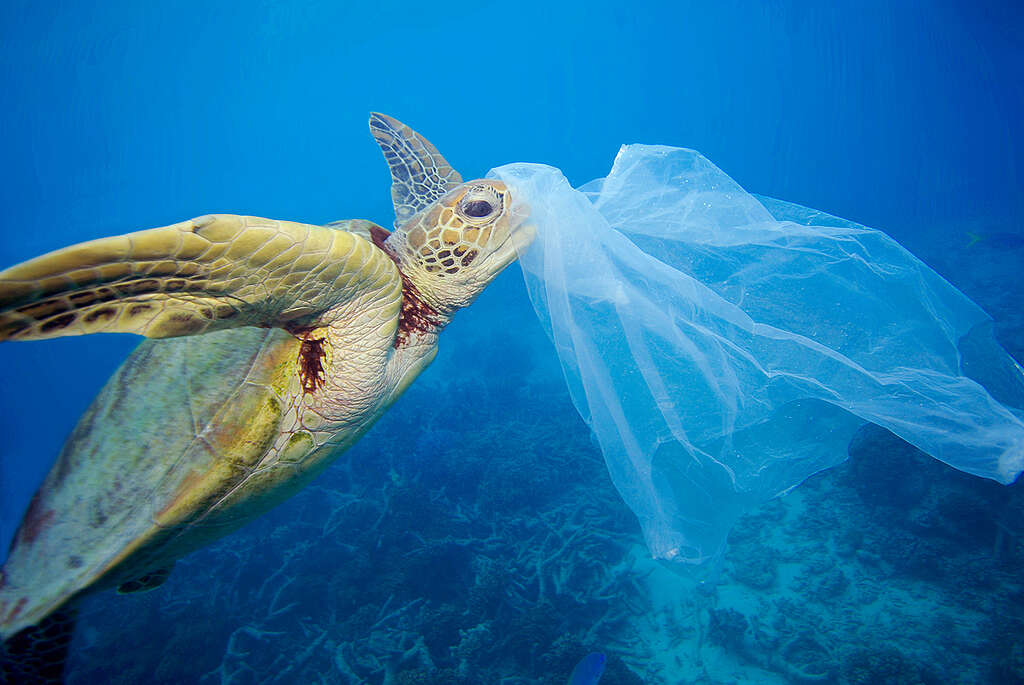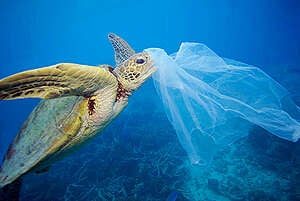Plastic waste isn’t just found in our oceans and woodlands, our bodies are now contaminated with plastic too. It’s very literally in us.

Health Risks of Microplastics and Plastic in Humans
Science is only beginning to understand the long-term effects of plastic on human health, yet the evidence so far is alarming. Microplastics have been found in the air we breathe, the food we eat1, and even in our organs and blood2. From production to disposal, our constant exposure and intake of plastic threaten our well-being.
Microplastics: Everywhere Even Inside Us
Microplastics are tiny plastic particles that result from the breakdown of larger plastic items or are manufactured as small pellets for industrial use. These particles have infiltrated almost every aspect of our environment:
There are more chemicals in plastic than previously thought. Plastics contain over 16,000 chemicals, many of which remain untested and may be toxic to human health. At least 4,200 (or 26%) of these are highly hazardous to human and environmental health.3
Scientists have found microplastics in human stools4, demonstrating how these particles are ingested and excreted by our bodies. Even more concerning is the discovery of microplastics in human lungs5, blood6, placentas, and breast milk7. This suggests that exposure to microplastics begins at a very early stage of development, potentially affecting health from the womb onward.
Inhalation and Ingestion of plastic:
Microplastics have been detected in the air we breathe and the food we eat 1. Research indicates that over 90 percent of samples of commercially available food-grade table salt from global brands contain microplastics 8. This widespread contamination highlights how pervasive microplastics and plastic in humans are becoming.
Plastic Food Contamination:
Microplastics have been found in a variety of commercially available foods, including seafood (such as fish, lobster, mussels, and clams)9. This contamination raises significant concerns about the potential health impacts of ingesting microplastics through our diet. The amount of microplastics a person might consume in food is difficult to quantify, but the implications for health are troubling.
The Hidden Dangers of Plastic Chemicals
Plastics contain over 16,000 chemicals, many of which remain untested and may be toxic to human health. At least 4,200 of these chemicals (or 26%) are highly hazardous to human and environmental health. The presence of these chemicals in everyday plastic products means that we are constantly exposed to potentially harmful substances.10
The presence of microplastics and plastic in humans is a clear indication of the pervasive nature of plastic pollution. While much remains to be understood about the long-term health effects of microplastics, the evidence so far underscores the urgent need for action.
A global threat needs a global response. Please help support the creation of a global plastics treaty by signing our petition today- before our planet chokes to death. Help end plastic pollution at the source and protect the health of future generations.

Governments around the world are now negotiating a Global Plastics Treaty – an agreement that could solve the planetary crisis brought by runaway plastic production. Let’s end the age of plastic – sign the petition for a strong Global Plastics Treaty now.
Sign petition- Qian N, Gao X, Lang X, Deng H, Bratu TM, Chen Q, Stapleton P, Yan B, Min W. Rapid single-particle chemical imaging of nanoplastics by SRS microscopy. Proc Natl Acad Sci U S A. 121(3):e2300582121 (2024). doi: 10.1073/pnas.2300582121. Epub 2024 Jan 8. PMID: 38190543
- https://www.sciencedirect.com/science/article/pii/S0160412022001258, Discovery and quantification of plastic particle pollution in human blood, [Heather A.Leslie, Martin J.M.van Velzen, Sicco H.Brandsma, A. DickVethaak, Juan J.Garcia-Vallejo, Marja H.Lamoree](https://www.sciencedirect.com/science/article/pii/S0160412022001258#!)
- State of Science on Plastic Chemicals. https://plastchem-project.org/
- https://www.ueg.eu/press/releases/ueg-press-release/article/ueg-week-microplastics-discovered-in-human-stools-across-the-globe-in-first-study-of-its-kind/; https://www.ncbi.nlm.nih.gov/pubmed/31476765
- Amato-Lourenço LF, Carvalho-Oliveira R, Júnior GR, Dos Santos Galvão L, Ando RA, Mauad T. Presence of airborne microplastics in human lung tissue. J Hazard Mater. 2021 Aug 15;416:126124. doi: 10.1016/j.jhazmat.2021.126124
- Yan, Z. et al. Analysis of Microplastics in Human Feces Reveals a Correlation between Fecal Microplastics and Inflammatory Bowel Disease Status. Environ. Sci. Technol. 56, 1, 414–421. (2022). Available from: https://doi.org/10.1021/acs.est.1c03924
- Ragusa, A. et al. Plasticenta: First evidence of microplastics in human placenta, Environment International, 146, 2021, 106274, https://doi.org/10.1016/j.envint.2020.106274
- https://www.greenpeace.org/usa/news/over-90-of-sampled-salt-brands-globally-found-to-contain-microplastics/
- Santillo, D., Miller, K. & Johnston, P. (2017) Microplastics as contaminants in commercially important seafood species. Integrated Environmental Assessment and Management 13, 516–521. DOI: 10.1002/ieam.1909
- State of Science on Plastic Chemicals. https://plastchem-project.org/


